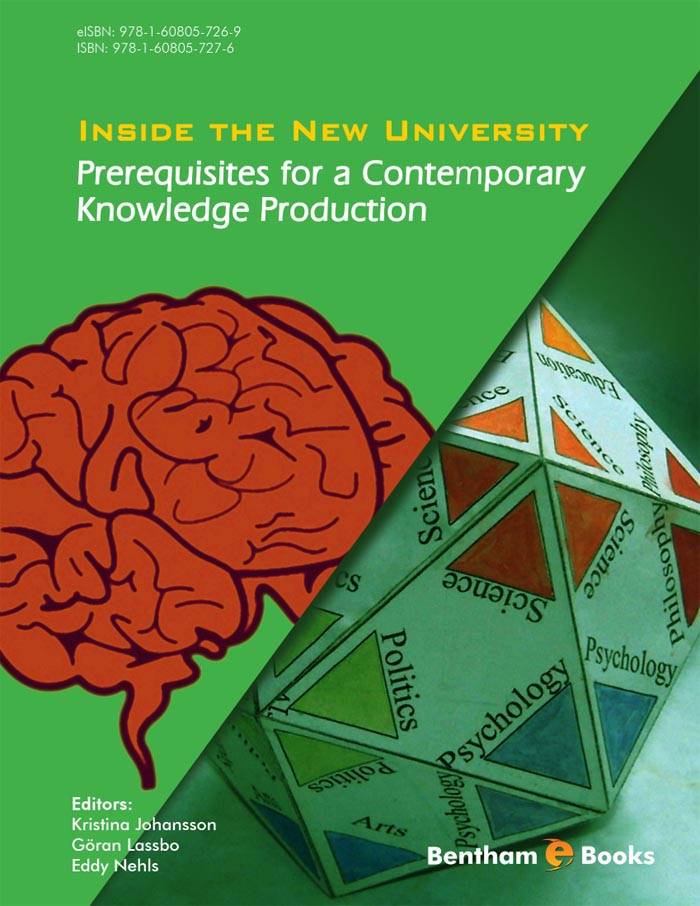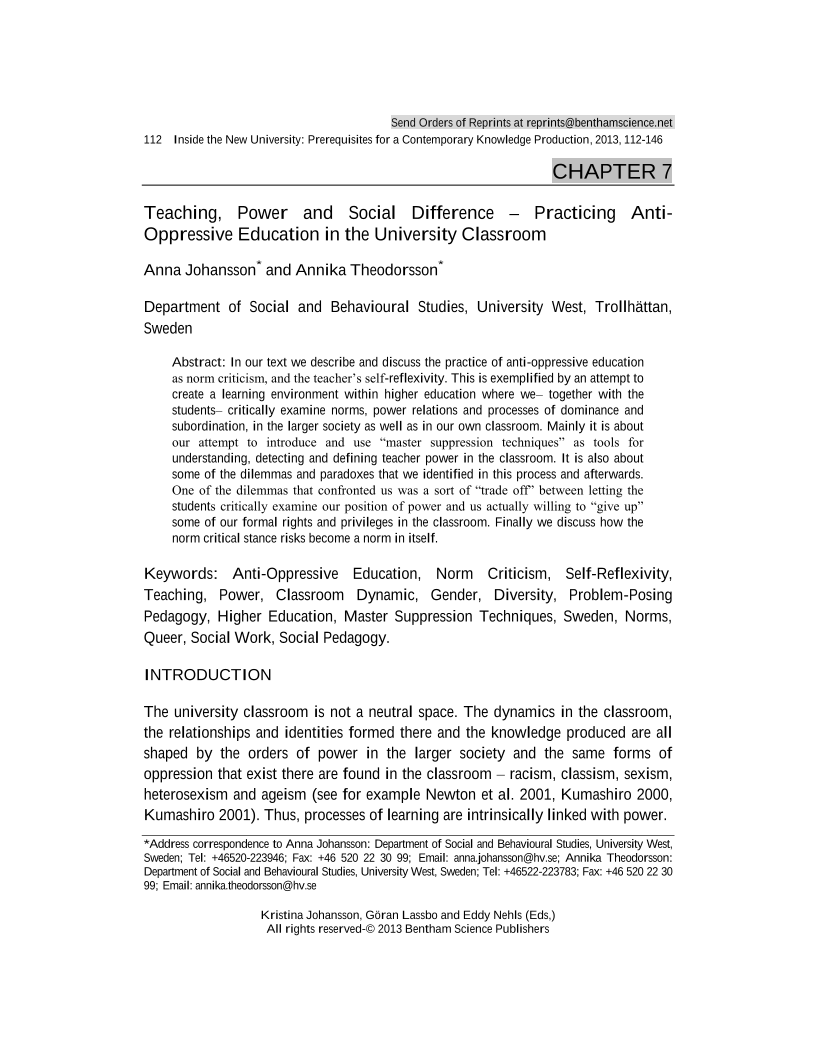Teaching, Power and Social Difference Practicing Anti-Oppressive Education in the University Classroom

- Authors: Anna Johansson1, Annika Theodorsson2
-
View Affiliations Hide Affiliations1 Department of Social and Behavioural Studies, University West, Trollhättan, Sweden 2 Department of Social and Behavioural Studies, University West, Trollhättan, Sweden
- Source: Inside the New University: Prerequisites for a Contemporary Knowledge Production , pp 112-146
- Publication Date: July 2013
- Language: English
Teaching, Power and Social Difference Practicing Anti-Oppressive Education in the University Classroom, Page 1 of 1
< Previous page | Next page > /docserver/preview/fulltext/9781608057269/chapter-7-1.gif
In our text we describe and discuss the practice of anti-oppressive education as norm criticism, and the teacher's self-reflexivity. This is exemplified by an attempt to create a learning environment within higher education where we together with the students critically examine norms, power relations and processes of dominance and subordination, in the larger society as well as in our own classroom. Mainly it is about our attempt to introduce and use "master suppression techniques" as tools for understanding, detecting and defining teacher power in the classroom. It is also about some of the dilemmas and paradoxes that we identified in this process and afterwards. One of the dilemmas that confronted us was a sort of "trade off" between letting the students critically examine our position of power and us actually willing to "give up" some of our formal rights and privileges in the classroom. Finally we discuss how the norm critical stance risks become a norm in itself.
-
From This Site
/content/books/9781608057269.chapter-7dcterms_subject,pub_keyword-contentType:Journal -contentType:Figure -contentType:Table -contentType:SupplementaryData105

